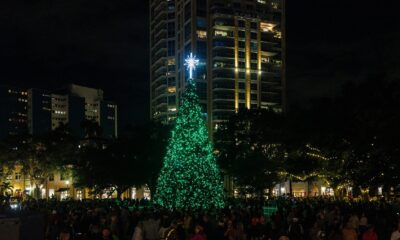Chamber music weekend: TFO, violinist Multer put the spotlight on strings

The Florida Orchestra’s concertmaster, violinist Jeffrey Multer, has curated a trio of Mahaffey Theater concerts this weekend that will focus squarely on strings.
It’s a holiday for brass. And for woodwinds. And, with the exception of a harpsichord in one piece, it’s a holiday for percussion.
The program, titled Tchaikovsky and Vivaldi For Strings, is right in Multer’s preferred wheelhouse – it’s chamber music, played by smaller and more intimate groups.
Multer, who joined The Florida Orchestra in 2006, was a member of two of New York’s most acclaimed chamber groups, the Oxford Quartet and Elements Quartet. And since the mid 1980s, he’s spent every single summer in North Carolina, as artistic director of chamber music, and head of the violin faculty, at the Eastern Music Festival.
The year 2020, of course, has been … different.
“This summer, I had the first Saturday in July off in 36 years,” Multer explains. “I just didn’t know what to do with myself. It was like what, should I learn French?”
He visited family, he got stuff done around the house, and he practiced. And practiced some more.
“Every year, at the end of the summer season, I’m completely burned out and I need a little time off,” Multer says. “I don’t like putting down the instrument, because I don’t like being rusty when I come back. So I do a little scales every day, so I don’t feel like I have to re-learn how to ride the bike.”
The Florida Orchestra’s limited season, with a 25 percent venue capacity and socially-distanced musicians, began in October.
“There are benefits of stopping completely for a short while, because your body re-boots a little bit. But with this big concert coming, I was like ‘You know what, I am not going to fall into the trap of just taking time off. This is my chance to get a little bit better.’
“Because I don’t have 17 boatloads of music on the conveyor belt, like Lucy and Viv at the chocolate factory. For once, I said, ‘I can practice scales really carefully for a month, and really do it carefully.’ I just kept going.”
Also put on hold: Multer’s St. Pete side project, the Palladium Chamber Players. With the Palladium Theater closed to live concerts for the time being, the group plans to video-record a performance in Hough Hall next week for streaming.
The program
The Florida Orchestra’s Tchaikovsky and Vivaldi For Strings, approximately one hour, will be performed without intermission at 2 and 8 p.m. Saturday, and at 2 p.m. Sunday (alternating with another TFO program, American Heroes, conducted by Michael Francis). All info and tickets are here.
“The program will go from small to large. We start with the Golijov piece, Last Round, which is for nine players. Two string quartets, plus a double bass. That’s a lot of fun, and the way that he wrote that piece is really, really cool – it’s basically two antiphonal quartets that are fighting with each other, like in a boxing match.
“The next piece is the Concerto for Four Violins in B Minor, which will have about 10 or 11 people onstage – an authentic baroque orchestra. A harpsichord will join us. He’s the only guy that isn’t a string player for the whole concert. Then we have four violinists and a small tutti group backing us up. It’ll be a small, lean and mean orchestra.
“For the Walker Lyric For Strings and the Tchaikovsky Serenade For Strings we’ll have a pretty good-sized string orchestra, like we would normally do for a chamber orchestra. Three double basses, four cellos, four violas – maybe a few more, I don’t remember – and maybe 16 violins.”
Such small ensembles, the violinist adds, don’t require a conductor. “It’s like the old days,” he reports, “before orchestras were so big that they needed a conductor to keep from falling apart. When you get to an 80-piece orchestra, some people are sitting so far from each other it’s just not possible to play together.
“So I will do some leading, but not any conducting per se. I’ll just be leading in the way that I would lead if I was playing in a string quartet. By the same token, when it’s time for the cellos to take over, they’ll be leading at that moment.”
Current CDC guidelines call for at least six feet between musicians. “We’ve been doing this all year so we’re getting used to it,” says Multer. “We’re all as close together as we can be without being unsafe. So we’ll be spread out all over the stage.”
He believes he’s found a silver lining to all this necessary change. “I realized it allows you to hear things a lot better, especially yourself. You really hear how you’re producing tone. I feel like I’ve actually been playing better because I can hear myself.”







